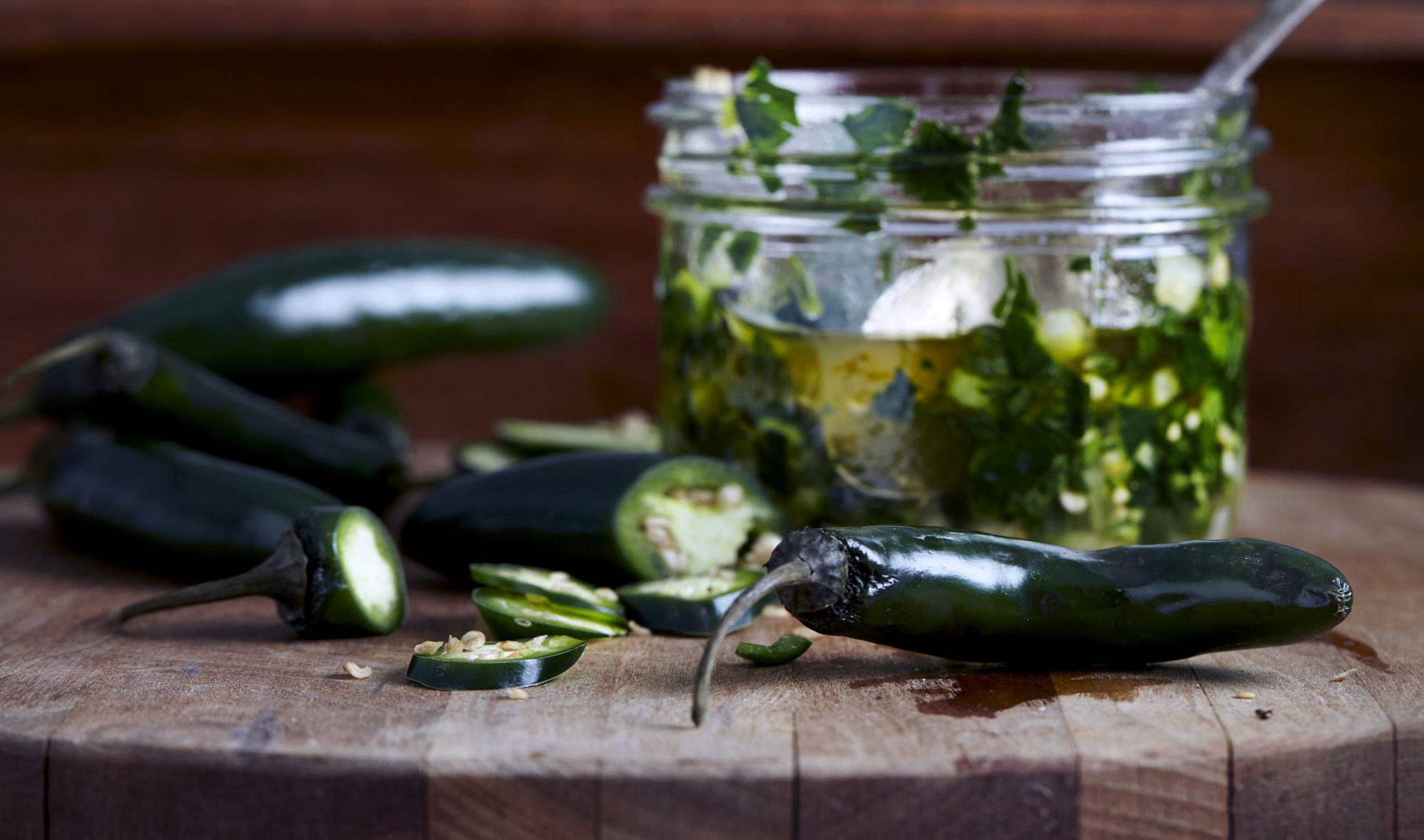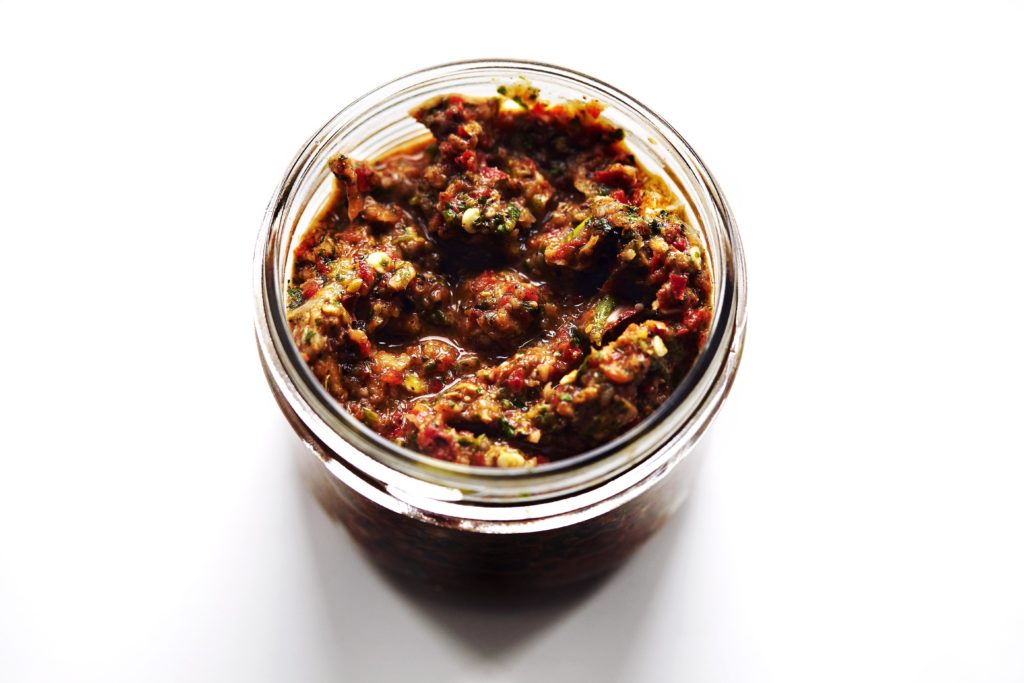Hot Peppers


Hot peppers – also known as chili peppers – represent a host of different pepper varieties that range in size and spice level. The Jalapeño pepper is one of the most common varieties: it is a relatively small, bright green, spicy pepper. Jalapeños pack a strong nutritional punch for their size: just one jalapeño provides more than a day’s worth of vitamin C. Jalapeños also contain a mix of other vitamins and a number of minerals including iron, magnesium, and zinc. Hot peppers can be used to add spice and flavor to all kinds of dishes. When preparing hot peppers, you may choose to remove the inner ribs and seeds to reduce the heat. Make sure you wash your hands after touching hot peppers; their heat can be transferred to your fingertips!
Hot peppers – also known as chili peppers – represent a host of different pepper varieties under the genus Capsicum.
Hot peppers contain capsaicin, the substance responsible for making them taste “hot.”
There is a great range of heat among chili peppers. This heat range is called the Scolville scale: the more Scolville Heat Units (SHU) a pepper has, the hotter it is.
One of the most common varieties of hot peppers is the Jalapeño. You may also find Thai chili peppers, poblano peppers, habanero peppers and many other varieties.
Though there are exceptions, hot peppers are usually smaller than sweet bell peppers.
Hot peppers are most commonly red or green, and sometimes orange or yellow. Color is not necessarily an indication of heat – rather, the type of pepper dictates the heat level.
Common jalapeño peppers are green, and about the length of your thumb.
One jalapeño pepper (14g) typically has 4 calories, 0.13g of protein, 0.05g of fat, 0.19g of carbohydrates, 0.4g of fiber, and 0.58g of sugars.
Jalapeño peppers pack a strong nutritional punch for their size. One jalapeño provides more than a day’s worth vitamin C. They are also a good source of vitamin K, vitamin A, vitamin E, and the B vitamins, as well as potassium, iron, magnesium, phosphorus, zinc, copper, and manganese.
Hot peppers can be found fresh, dried as spices, pickled and packed in vinegar or oil, or even canned. They also appear in spicy sauces and condiments such as salsa, hot sauce, or Sriracha sauce.
Fresh hot peppers can be found in the produce section of your supermarket. If selecting fresh peppers, look for bright colors, shiny skin, and a fresh spicy scent. Avoid peppers that are mushy or moldy.
If purchasing dried peppers, check the date on the package for expiry. Or, if buying bulk, choose peppers that are dry and clean, without mold or any musty smell.
For packaged or canned versions, look for peppers in the ethnic section of your supermarket that corresponds with the type of pepper you want and how you plan to cook with it. For example: the Mexican section will typically have canned jalapeños, salsas, and canned chipotles packed in adobo sauce.
Tip: Seek out specific peppers at ethnic markets or shops catering to the particular cuisine you plan to cook. For example: jalapeños, poblanos, and habaneros are typical in Mexican cuisine; Scotch bonnet peppers are common in Jamaican cuisine; Thai chilis are frequently found in Southeast Asian dishes; hot green chilis are often used in Indian dishes; Pepperoncini and hot cherry peppers are used in Italian cuisine; etc. Exploring these markets is a great way to introduce yourself to new kinds of peppers and experiment with different dishes. Just be warned: some of these peppers are extremely hot!
Keep peppers in an open plastic bag in the vegetable compartment of your fridge.
Depending on their freshness, hot peppers can be stored for about 3 to 5 days.
The seeds of hot peppers are usually edible. However, to reduce the heat you may remove the inner ribs and seeds with a knife before cooking.
Peppers can be used in a multitude of ways. Hot peppers are commonly chopped and added to salsa, or a small amount of diced peppers may be added to spicy dishes like curries, stir fries, or chilies. They can also be pickled, puréed into hot sauce, or made into a savory-spicy jam.
Tip: If you are sensitive to spice, or if working with extremely hot peppers, you may want to wear gloves while preparing the peppers. After handling peppers, wash your hands immediately as to avoid transferring the spice elsewhere. Most importantly, do not touch your eyes after handling peppers.

This paste is great to use as a rub for meats or as an addition to stews. No matter how you choose to use it, it's sure to add a punch of flavor to your meal.
Prep Time: 10 minutes Cook Time: 0 minutes Yield: 1 jar
Add all ingredients to a food processor and combine. Add olive oil in 1 tbsp at a time until everything turns into a loose wet consistency.
Store the rub in a sterile jar and keep in the fridge for a few weeks.
Precision Nutrition’s Encyclopedia of Food expands every single month as we highlight new foods and showcase beautiful food photography. If you’d like to stay up to date, simply click this link. From there, we’ll send you a FREE copy of our recipe book. We’ll also let you know when new and delicious foods are added to the site.
Hot peppers – also known as chili peppers – represent a host of different pepper varieties that range in size and spice level. The Jalapeño pepper is one of the most common varieties: it is a relatively small, bright green, spicy pepper. Jalapeños pack a strong nutritional punch for their size: just one jalapeño provides more than a day’s worth of vitamin C. Jalapeños also contain a mix of other vitamins and a number of minerals including iron, magnesium, and zinc. Hot peppers can be used to add spice and flavor to all kinds of dishes. When preparing hot peppers, you may choose to remove the inner ribs and seeds to reduce the heat. Make sure you wash your hands after touching hot peppers; their heat can be transferred to your fingertips!